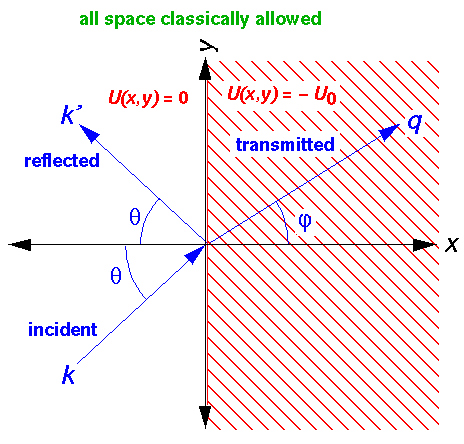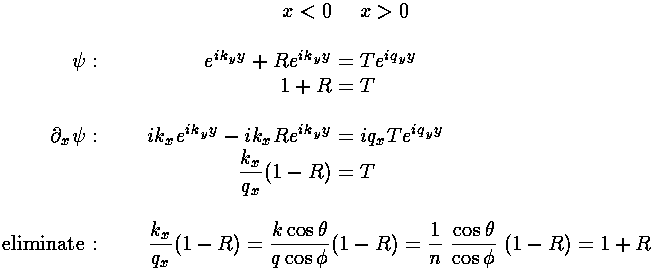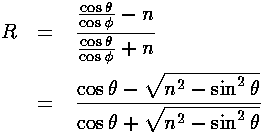

Classically, the downward step in potential at x=0 corresponds to an infinite force in the x direction located just on the x=0 line. Everywhere except x=0 the potential is flat, and so we are almost always in a no-force (i.e., "free particle") situation. Particles move with the speed required for their energy. On the left hand side:
p2=2mE
and on the right hand side we have a faster speed:
p2=2m(E+U0)
Since there is no force in the y direction, the momentum in the y direction: py is conserved, even at the potential step. Thus when a particle makes the energy jump at x=0, px must increase to supply the increase in kinetic energy. Since px is enlarged and py is conserved, the direction of the particle changes. We find:

We see that the particle is Snell's Law "refracted" as if with an "index-of-refraction" n. Newton used such a particle-based explanation for the behavior of light. We note some oddities:
Schrödinger's equation for our problem is:

Thus:

with solutions:

We note that Schrödinger's equation does not require, say, qx, to be a real number, only that qx2+qy2 have a given value. If qx is imaginary, we can have exponentially decaying solutions like: exp(-|qx|x).
Note that since we no longer have a finite sized box we've lost our length scale. We are forced to use dimensioned coordinates.
We now consider a solution that includes incident, reflected, and refracted waves:

As usual we must match  and
and  along the boundary x=0. Thus we end up considering
the values of
along the boundary x=0. Thus we end up considering
the values of  for r=(0,y)
and produce functions like:
for r=(0,y)
and produce functions like:
exp(ikyy) and exp(iqyy)
If ky does not equal qy we would have different wavelengths on each side of the boundary so while we could match at a point, there would be no hope of matching all along the boundary. Thus we immediately produce the "refraction" condition that:
ky=qy
We now proceed to match  and
and  and derive the reflected amplitude R:
and derive the reflected amplitude R:

Since:

We can simplify our expressions for R:

We note that quantum mechanical reflection is exactly the same as the reflection
of TE polarized light. Note the obvious check that
here is no reflection if n=1. At normal incidence ( =0)
R=(1-n)/(1+n). At grazing incidence
(
=0)
R=(1-n)/(1+n). At grazing incidence
( =90°) R=-1. If n<1
(i.e., U0<0) we can have total internal reflection
for sin
=90°) R=-1. If n<1
(i.e., U0<0) we can have total internal reflection
for sin >n. As we show below, we have produced
an imaginary qx, so the "transmitted" wave does not propagate,
rather it decays away for positive x:
>n. As we show below, we have produced
an imaginary qx, so the "transmitted" wave does not propagate,
rather it decays away for positive x:
